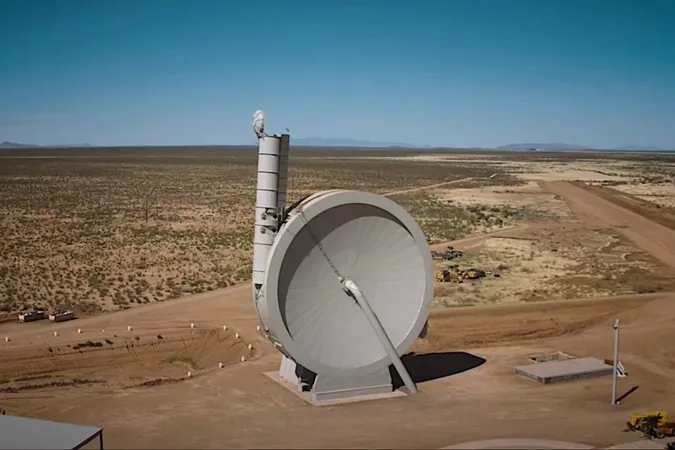
Space Startup SpinLaunch Shatters Expectations with Incredible Satellite Survival at 10,000Gs!
2024-12-09
Author: Wai
SpinLaunch's Groundbreaking Achievement
In a groundbreaking achievement, California-based startup SpinLaunch has proven that satellites can endure extreme conditions—surviving an astonishing 10,000 gravitational forces in a recent test of their innovative centrifugal launch system. This pioneering approach to space travel could revolutionize the way we send payloads into orbit.
The Demonstration of Durability
During the demonstration, SpinLaunch accelerated an off-the-shelf CubeSat, equipped with ruggedized components, under intense spinning forces. Remarkably, the small satellite emerged intact, demonstrating the resilience and durability of modern spacecraft materials. This milestone is a significant step forward for SpinLaunch, which is actively working to develop a cost-effective and environmentally friendly means of launching small satellites into low-Earth orbit.
Collaboration with Portland State University
The test was conducted in collaboration with Portland State University’s open-source CubeSat program, known as OreSat. SpinLaunch engineers made key modifications to the CubeSat's design, such as repositioning the battery cells to act as structural pillars and reinforcing circuit boards to withstand stress. “These adjustments were minimal but crucial for ensuring the satellite's compatibility with our launch system,” explained Sev Sandomirsky, the director of satellite programs at SpinLaunch.
Resilience of Satellite Components
A surprising takeaway from this test is that many components of contemporary satellites are inherently capable of withstanding the intense conditions produced during launch. “While not every element might survive our process, we have demonstrated that high-quality, cost-effective satellites can thrive within our launch environment,” Sandomirsky emphasized.
Revolutionizing Satellite Deployment
Founded in 2014, SpinLaunch is redefining the landscape of satellite deployment with its kinetic launch paradigm—essentially a giant centrifuge designed to launch payloads to high altitudes. After reaching stratospheric elevations, a propulsion stage takes over to propel the payload to low-Earth orbit. The company touts that its unique approach could significantly slash launch costs by up to 90% and reduce fuel usage by 70% compared to traditional chemical rockets, heralding a new era for space exploration and commercialization.
Implications for the Future of Space Travel
As the space race heats up, SpinLaunch's innovative technology underscores a growing trend toward sustainable space travel. With major implications for satellite communications, earth observation, and scientific research, the successful demonstration sets a promising precedent for future launches, potentially changing the way we access outer space forever.
Conclusion
Will SpinLaunch's method reshape the future of satellite launches? Only time will tell, but this impressive feat has certainly set the stage for more adventurous explorations beyond our planet!
 Brasil (PT)
Brasil (PT)
 Canada (EN)
Canada (EN)
 Chile (ES)
Chile (ES)
 España (ES)
España (ES)
 France (FR)
France (FR)
 Hong Kong (EN)
Hong Kong (EN)
 Italia (IT)
Italia (IT)
 日本 (JA)
日本 (JA)
 Magyarország (HU)
Magyarország (HU)
 Norge (NO)
Norge (NO)
 Polska (PL)
Polska (PL)
 Schweiz (DE)
Schweiz (DE)
 Singapore (EN)
Singapore (EN)
 Sverige (SV)
Sverige (SV)
 Suomi (FI)
Suomi (FI)
 Türkiye (TR)
Türkiye (TR)